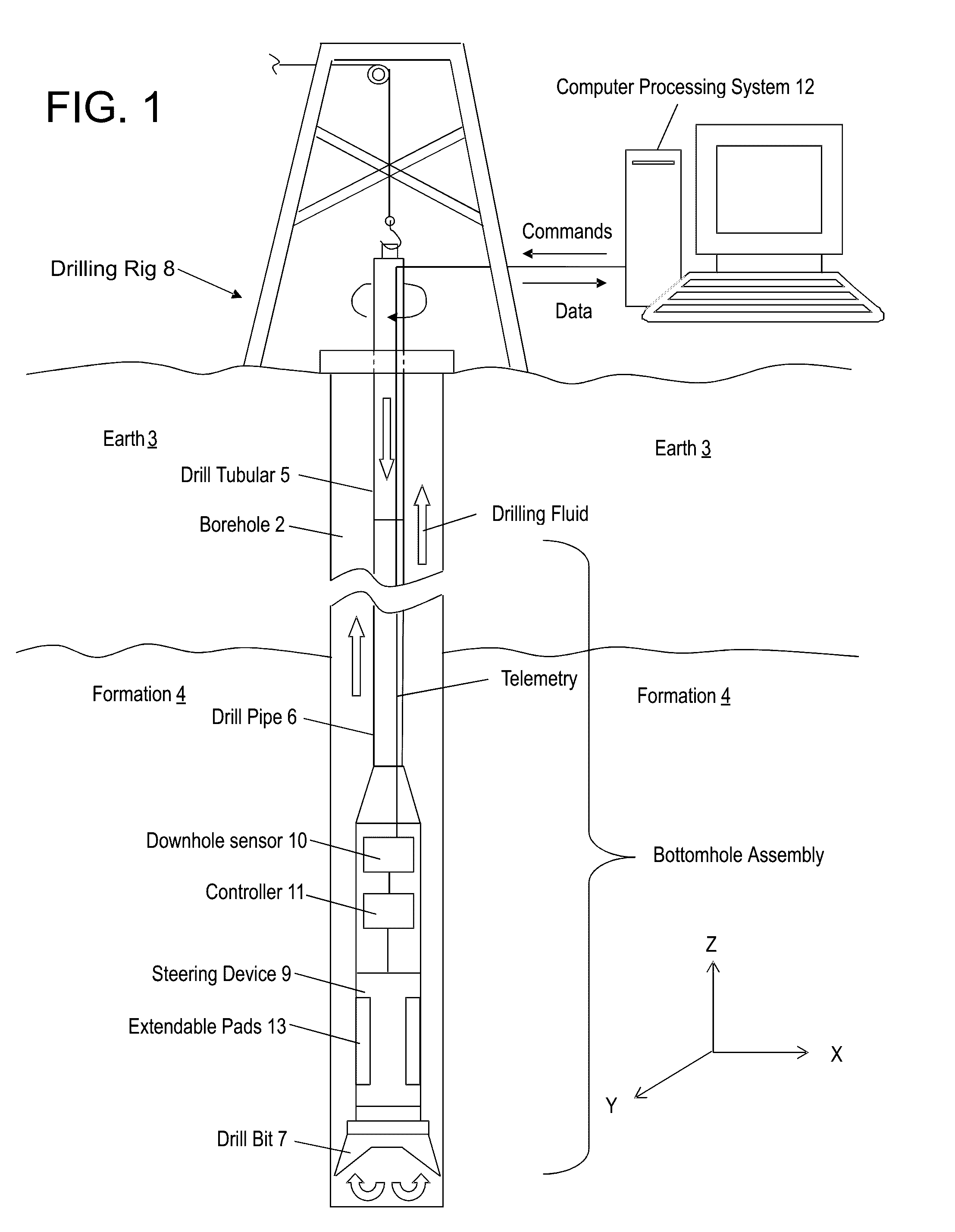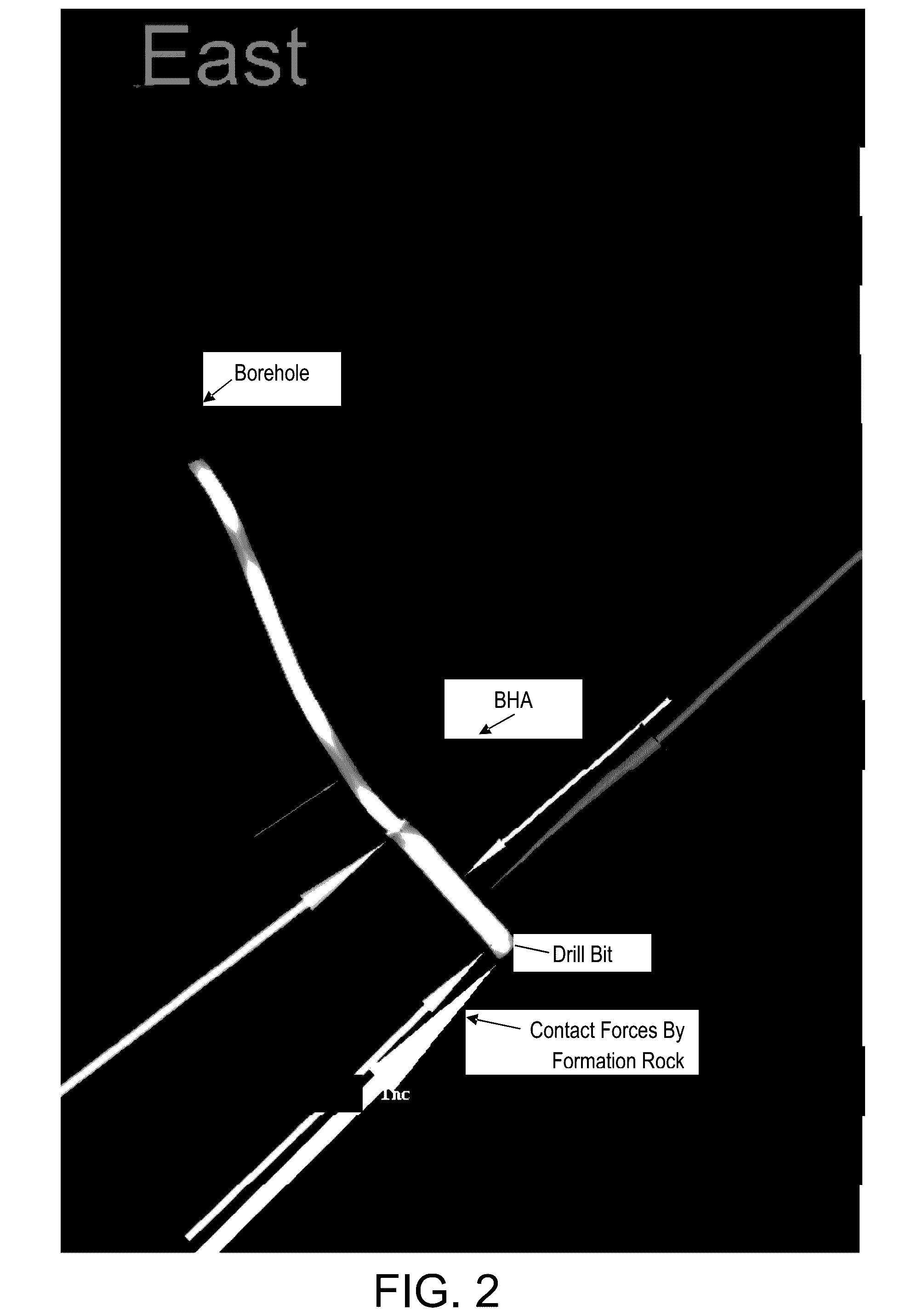Methods of controlling drill bit trajectory by predicting bit walk and wellbore spiraling
a drill bit and trajectory prediction technology, applied in the direction of survey, instruments, borehole/well accessories, etc., can solve the problems of complex directional drilling process
- Summary
- Abstract
- Description
- Claims
- Application Information
AI Technical Summary
Benefits of technology
Problems solved by technology
Method used
Image
Examples
embodiment 1
[0179]A method of controlling drill bit trajectory in a subterranean formation, the method comprising: receiving drilling parameters for operating a specific bottomhole assembly (BHA); constructing, with a computer processor, a directional drill-ahead simulator comprising a computer model of the BHA and the subterranean formation; calculating, with the computer processor, axial motion and lateral motion of a drill bit connected to a bottom end of the BHA using at least one formation parameter and at least one drilling parameter; predicting, with the computer processor, bit walk of the drill bit by accounting for and calculating contact forces and frictional forces between the BHA and a wall of a borehole in the subterranean formation using the computer model of the BHA; determining, with the computer processor, an adjusted drill bit trajectory to account for the predicted bit walk; determining adjusted drilling parameters for operating the BHA to substantially follow the adjusted dr...
embodiment 2
[0180]The method of Embodiment 1, further comprising predicting wellbore spiraling by accounting for and calculating the contact forces and the frictional forces using the computer model of the BHA.
embodiment 3
[0181]The method of Embodiment 1, wherein constructing the directional drill-ahead simulator comprising the BHA computer model comprises: constructing a three-dimensional model of the BHA and the subterranean formation; configuring the BHA computer model to be a dynamic model in a depth domain; configuring the BHA computer model to predict a build-up-rate based at least in part on the predicted bit walk of the drill bit using error-reducing iterations in each step of a finite element analysis; and configuring the BHA computer model to operate in real time during drilling operations.
PUM
 Login to View More
Login to View More Abstract
Description
Claims
Application Information
 Login to View More
Login to View More - R&D
- Intellectual Property
- Life Sciences
- Materials
- Tech Scout
- Unparalleled Data Quality
- Higher Quality Content
- 60% Fewer Hallucinations
Browse by: Latest US Patents, China's latest patents, Technical Efficacy Thesaurus, Application Domain, Technology Topic, Popular Technical Reports.
© 2025 PatSnap. All rights reserved.Legal|Privacy policy|Modern Slavery Act Transparency Statement|Sitemap|About US| Contact US: help@patsnap.com



